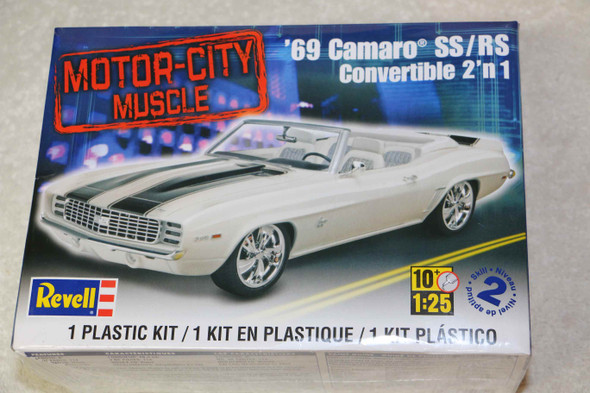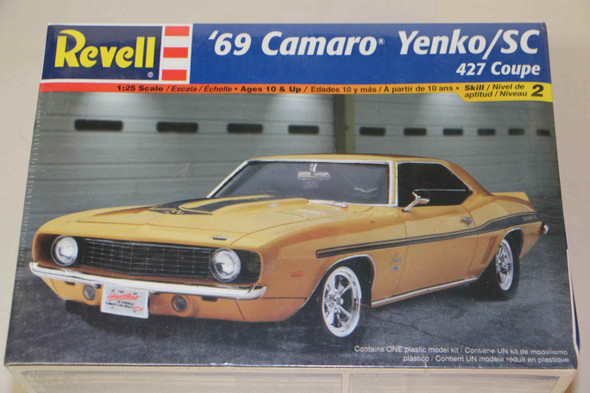Revell
RAG07712 - Revell 1/25 1969 Camaro SS396
- SKU:
- RAG07712
- UPC:
- 4009803077123
- Shipping:
- Calculated at Checkout
Description
The first-generation Camaro debuted in September 1966. It was produced for the 1967 through 1969 model years on a new rear-wheel drive GM F-body platform as a two-door 2+2 in coupé and convertible models. The base engine was 230 cu in (3.8 L) inline-6, with a 250 cu in (4.1 L) six or 302 cu in (4.9 L), 307 cu in (5.0 L), 327 cu in (5.4 L), 350 cu in (5.7 L), and 396 cu in (6.5 L) V8s as options. Concerned with the runaway success of the Ford Mustang, Chevrolet executives realized that the sporty version of their compact rear-wheel drive Corvair, the Monza, would not be able to generate the sales volume of the Mustang due to limitations with that layout (including its inability to share the whole range of Chevrolet engines) and declining sales, partly due to the negative publicity from Ralph Nader's book, Unsafe at Any Speed. Therefore, the Camaro was touted as having the same conventional rear-drive, front-engine configuration as the Mustang. In addition, the Camaro could borrow parts from the existing Chevy Nova the way the Mustang did from the Ford Falcon. The first-generation Camaro lasted until the 1969 model year and eventually inspired the design of the new retro fifth-generation Camaro.
The first-generation was available in Super Sport, Rally Sport, and beginning in December 1966 the high-performance Z/28, models. It came with stripes on the hood and trunk (that could be optioned-out at no charge), styled rally road wheels, and a special 302 cu in (4.9 L) V8 engine that had been developed for Trans Am series racing. Front vent windows disappeared and safety side marker lights appeared in 1968.






